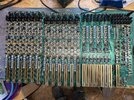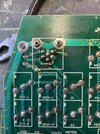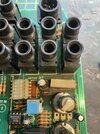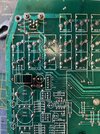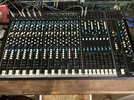Peter Mele
New Member
Ahem… so I did indeed speak a little too soon! The power supply is working with all the right voltages coming out the right pins and no fuses are blowing.. but it seems the mixer might have a few issues of its own! Oh well.. easy is boring as they say! I haven’t had time to properly figure out what’s wrong with it but so far, it bums a bit and the leds on the psu go out when it’s plugged into the mixer, the meter lights flicker a bit and the meters don’t show any signal presence but as I said, I haven’t properly tested to see what’s wrong as yet.. but if I do ever get to the bottom of it then great.. if not, fixing the psu was a great learning experience that’s for sure..
Thanks
Pete
Thanks
Pete
